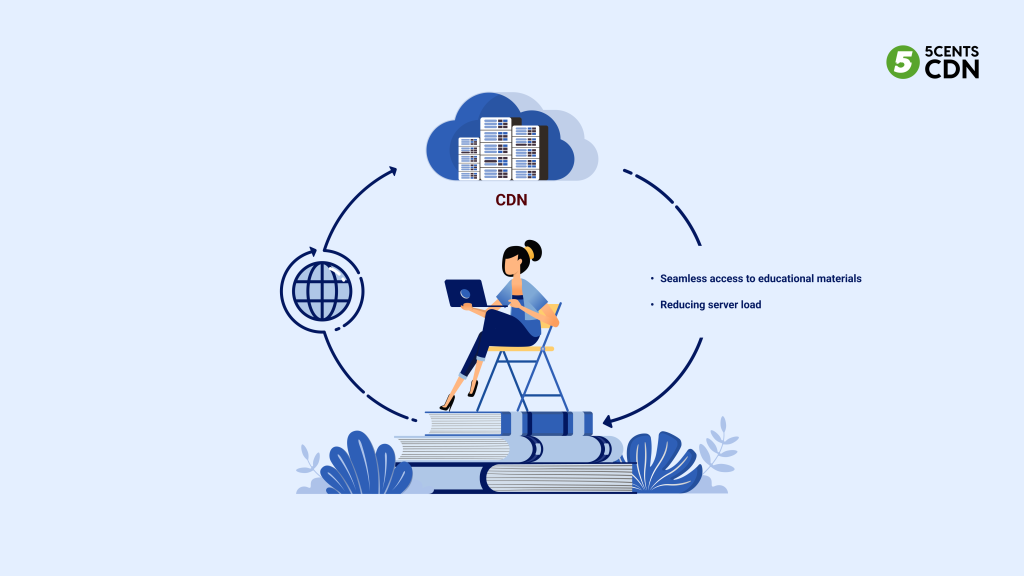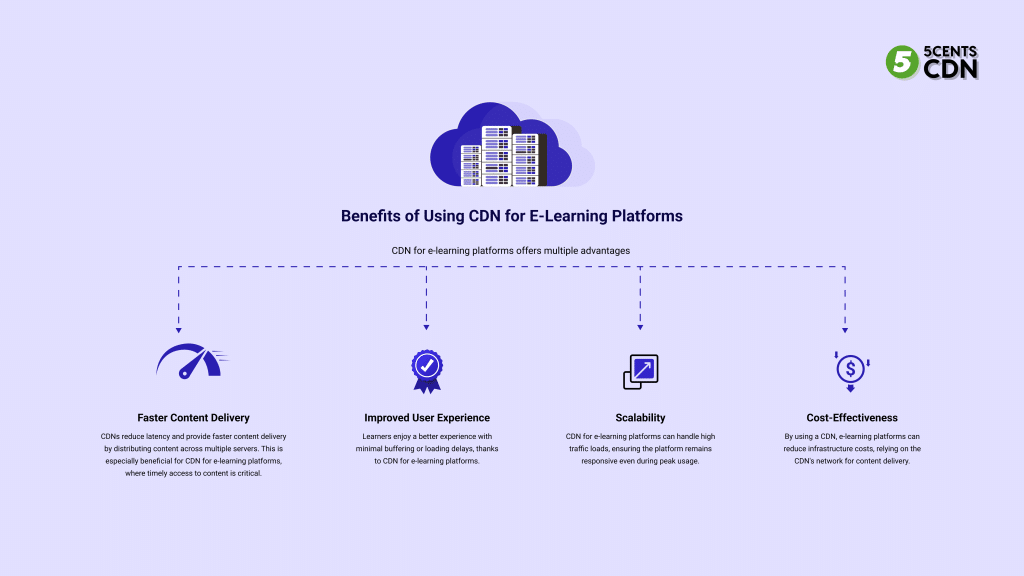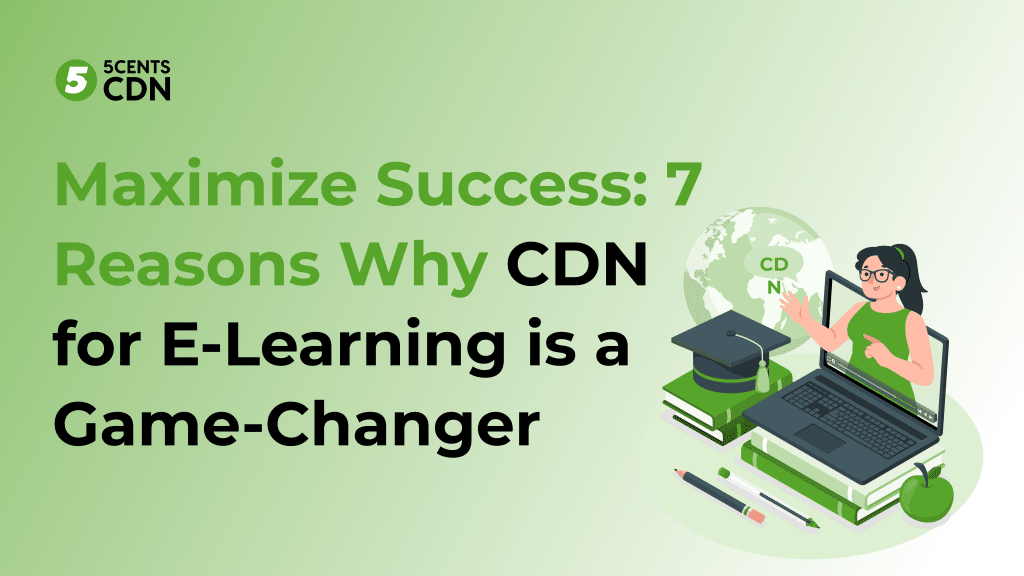CDN stands for Content Delivery Network. It is a geographically distributed network of servers that efficiently deliver website content, such as images, videos, and other static assets, to users based on their geographic location. This efficiency is particularly crucial for CDN for e-learning platforms, where content needs to be accessible globally at high speeds.
When a user requests a website, the request is routed to the nearest CDN server, which delivers the content quickly and efficiently, minimizing the distance the data travels and reducing latency. This results in faster loading times, improved website performance, and a better user experience. CDN for e-learning platforms benefits significantly from this setup, as it ensures that educational content is delivered swiftly to learners worldwide.
Importance of CDN

CDNs are instrumental in delivering content faster and more efficiently to users across a variety of websites and applications. For CDN for e-learning platforms, this means providing seamless access to educational materials, reducing server load, and improving performance even during peak traffic times.
E-commerce websites, gaming and streaming platforms, and mobile apps all benefit from CDN technology. However, the impact on e-learning platforms is profound, as CDN for e-learning ensures that multimedia content, such as videos and audio files, is delivered without frustrating loading times.
Benefits of Using CDN for E-Learning Platforms

CDN for e-learning platforms offers multiple advantages:
Faster Content Delivery:
CDNs reduce latency and provide faster content delivery by distributing content across multiple servers. This is especially beneficial for CDN for e-learning platforms, where timely access to content is critical. This ensures that learners have immediate access to essential educational resources, making the timely availability of content a top priority for an effective learning journey.
Improved User Experience:
The integration of CDN technology into e-learning platforms dramatically enhances the learning experience, virtually eliminating frustrating buffering or loading delays. This seamless delivery of content, made possible by CDN for e-learning, ensures that learners remain engaged and focused, free from the distractions of technical disruptions, thus fostering a more conducive learning environment.
Scalability:
The robust infrastructure of CDN for e-learning platforms is designed to adeptly manage and sustain high traffic volumes, guaranteeing that the platform remains agile and responsive, even during periods of peak demand. This scalability is crucial for accommodating a growing number of learners, ensuring that the platform’s performance remains consistent and reliable, regardless of the user load.
Cost-Effectiveness:
Adopting a CDN strategy allows e-learning platforms to significantly reduce their reliance on expensive server infrastructure, instead capitalizing on the distributed network of servers offered by the CDN. This shift not only leads to substantial savings in infrastructure costs but also enhances content delivery efficiency, making CDN for e-learning an economically viable solution that benefits both providers and users alike.
Global Reach and Reliability:
One of the most significant benefits of CDN for e-learning is its global reach. E-learning platforms cater to a diverse, international audience. A CDN ensures that regardless of a learner’s location, whether they’re in a bustling city or a remote area, the quality of content delivery remains consistent.
Enhanced Security Measures:
Security is a paramount concern for e-learning platforms, as they handle sensitive information, including personal data and intellectual property. CDN providers often offer advanced security features such as DDoS protection, secure token authentication, and SSL/TLS encryption.
Optimized for Multimedia Content:
The nature of e-learning involves a substantial amount of multimedia content, from video lectures and interactive modules to downloadable PDFs. CDNs are particularly adept at handling such diverse content types, optimizing their delivery for faster, more efficient access.
Future-Proofing E-Learning Platforms:
As technology evolves, so do the demands of online learners. CDNs are at the forefront of technological advancements, ensuring that e-learning platforms can quickly adapt to new formats, higher video resolutions, and emerging interactive tools. This future-proofing is crucial for maintaining a competitive edge in the rapidly evolving educational technology landscape.
What Is E-Learning?
E-Learning uses electronic technology, primarily the internet, to deliver educational content and facilitate learning. This method allows learners to access material from anywhere at any time, provided they have an internet connection. CDN for e-learning platforms enhances this accessibility, making it an invaluable tool for delivering diverse learning formats like online courses, webinars, and interactive games.
E-Learning Is Used For
E-Learning serves various sectors, including corporate training, higher education, K-12 education, healthcare, and professional development. CDN for e-learning platforms ensures that these sectors can deliver training and educational content effectively and reliably, regardless of the learner’s location.
Conclusion
Leveraging CDN for e-learning platforms offers faster content delivery, improved user experience, scalability, better performance during peak hours, and cost savings. By distributing content across multiple servers, CDNs ensure that e-learning platforms can provide learners with the content they need quickly and efficiently, enhancing the overall learning experience.

